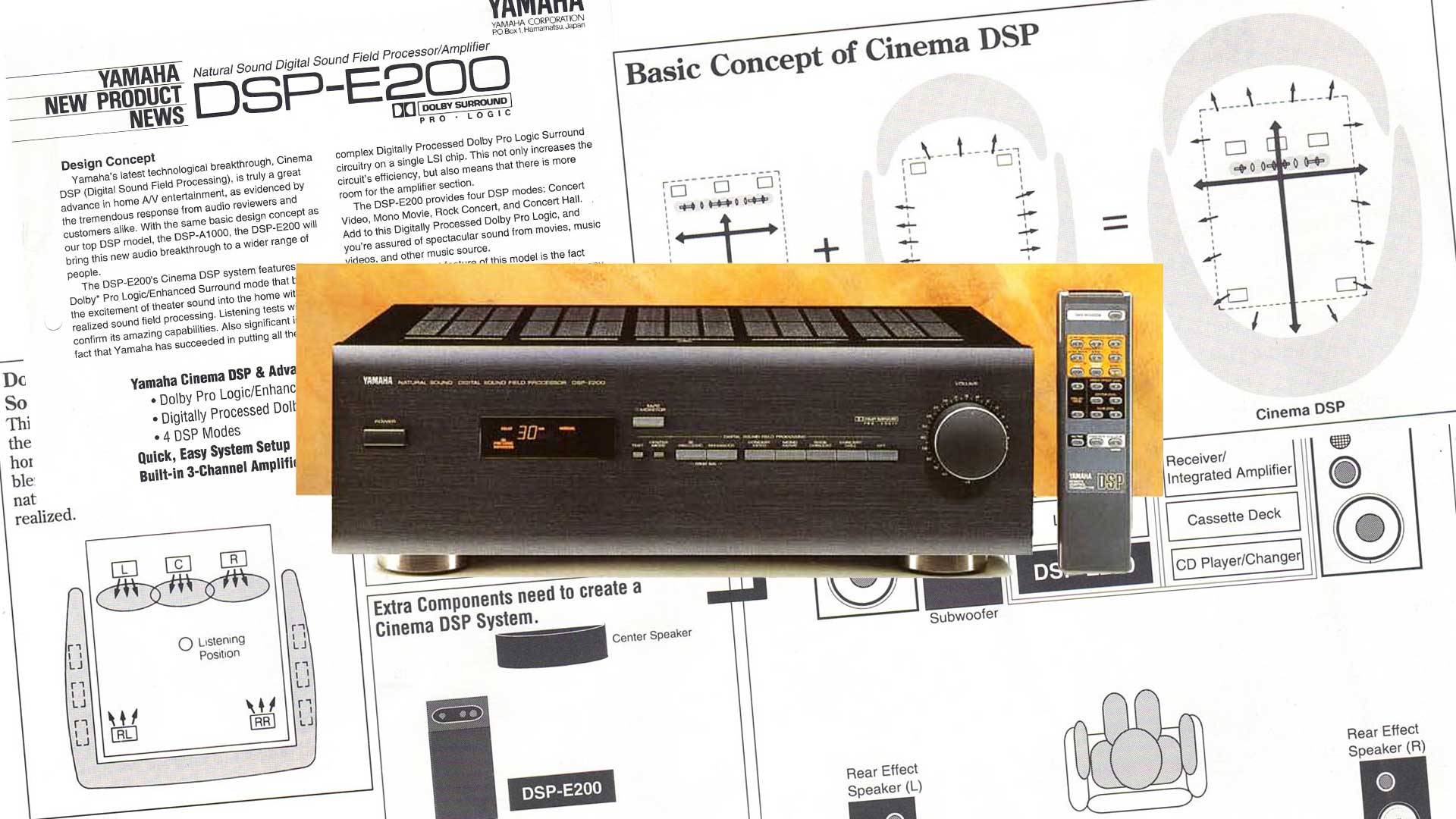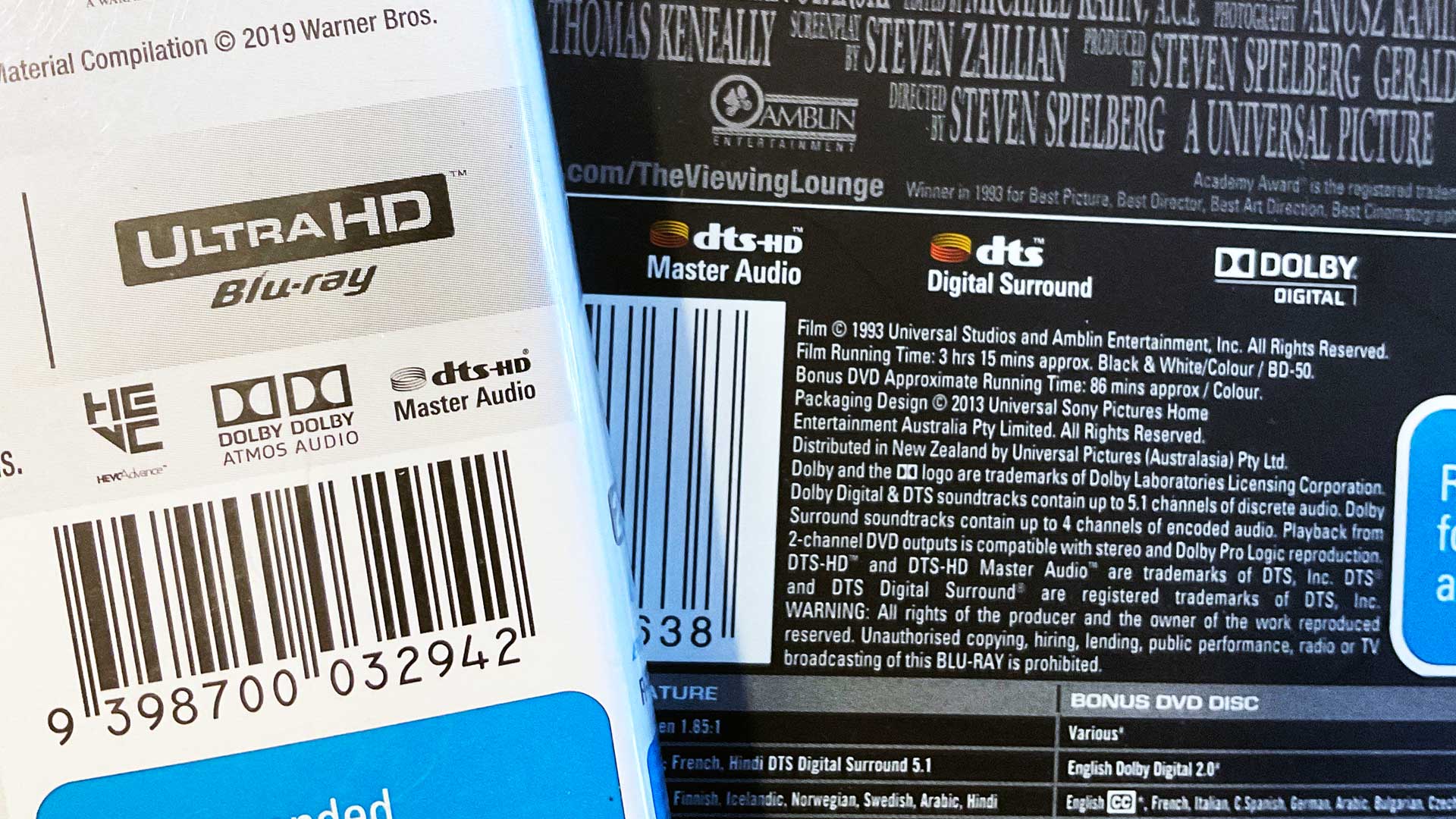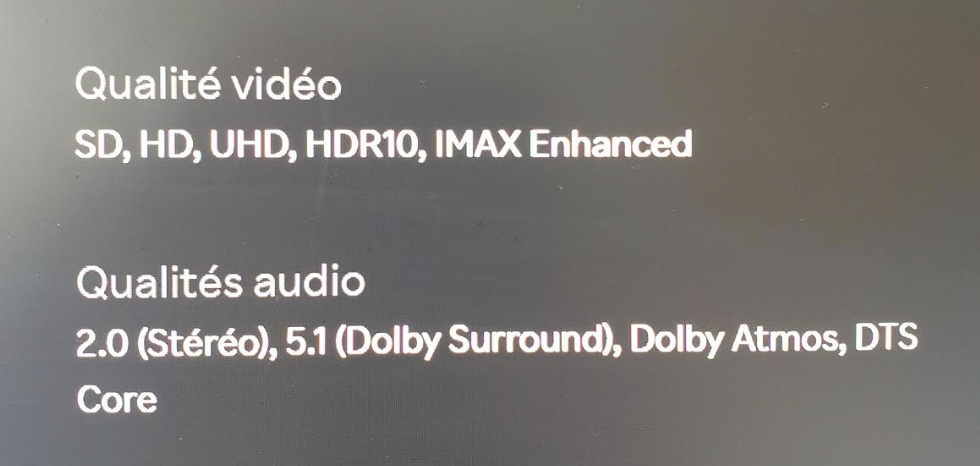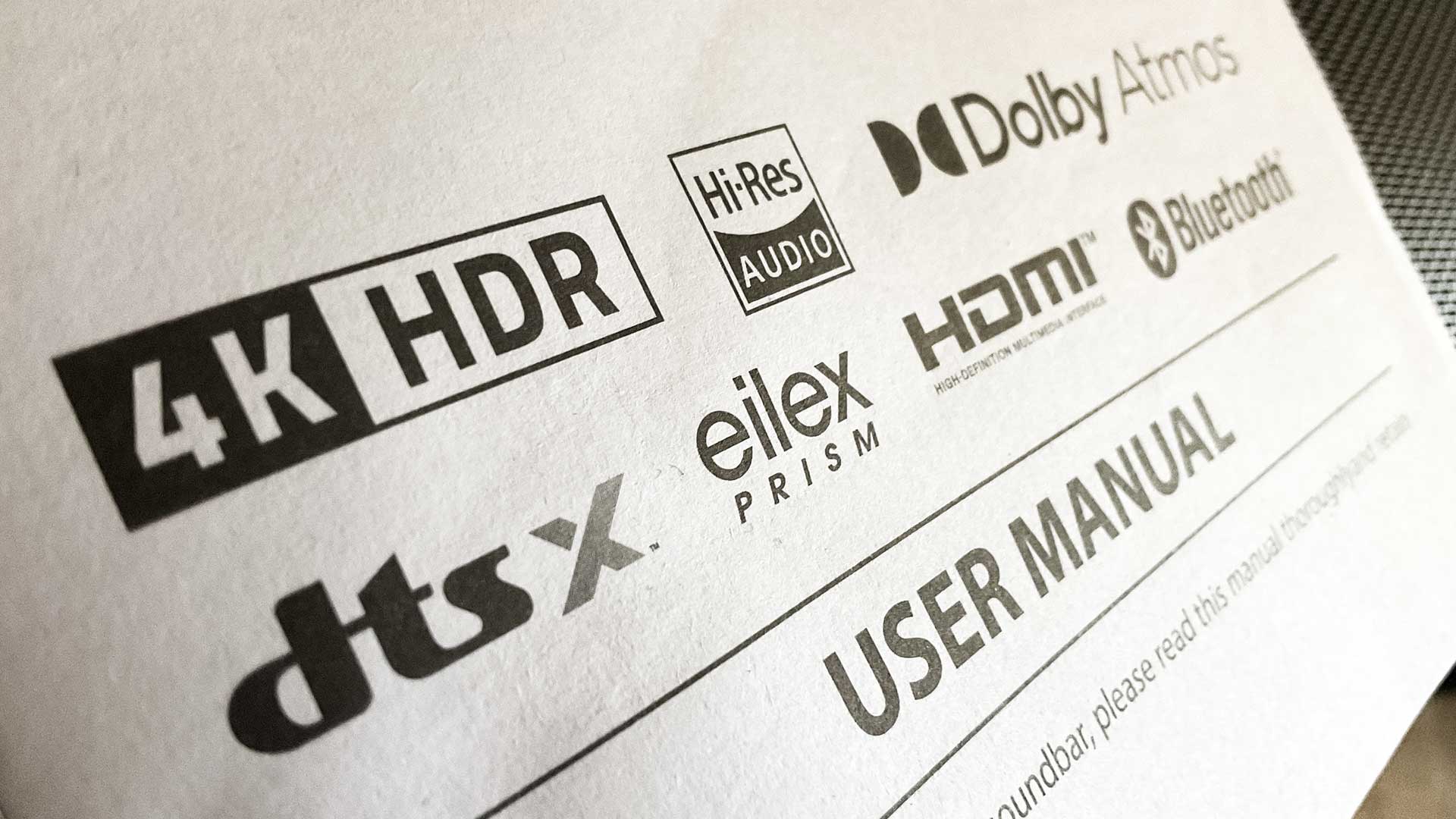Is the DTS vs Dolby war effectively over?
How can DTS compete with the streaming domination of Dolby Atmos?

The first time I remember hearing surround sound was early 1977, in a cinema showing King Kong – the version with Jeff Bridges and Jessica Lange. So far as I recall, it was used only near the end, when Kong plunged from the Twin Towers and lay dying; his heartbeat was pumped around the auditorium.
Although the immediate effect was to remove you from the moment by way of amazement at this new sonic immersion, it certainly made its mark on the 12-year-old kid who had bussed to the Redditch Classic Cinema and handed over his pocket money for the bigscreen Kong experience.
A decade and a bit later, I was working at What Hi-Fi? magazine at just the time when consumer surround sound began its assault on the world’s living rooms. It was all Dolby Pro-Logic at first, with two mono rears and a centre added to the conventional stereo pair. I recall plugging up an early Yamaha unit which powered just those three additional channels, leaving the main stereo system unaffected while decoding the extra channels magically from the Hi-Fi stereo track of a VCR – or, for the lucky few, LaserDisc.

Enter DTS
Dolby Digital was next, and shortly thereafter a competitor: DTS. Championed by Spielberg, who used it for Jurassic Park, DTS seemed at first to threaten yet another format war for video, just as we’d all got over the whole VHS vs Betamax thing. But soon enough equipment arrived which could decode either format, so that for consumers, it didn’t much matter what format was on the tape, or thereafter on the disc. If it translated into effective surround sound, all was good.
That’s an important point – it has never much mattered to the consumer which surround format accompanies a movie, even multiple ones, so long as equipment caters for it, although discerning audiophiles in the video world might express a preference, which back then was more often than not for DTS.
Dolby Digital compressed its 5.1 channels into a total bit-rate of 448kb/s on DVDs, less than half that required for stereo CD quality, let alone six channels. DTS was less compressed, up to 768kb/s, but stereo tracks might be included up to 24-bit/96kHz high-res. If you have a stash of old music DVDs (as do I), then it’s always worth checking if there’s an additional DTS track on there. The mixes can differ significantly, and the alternate DTS track can sound significantly better, if often also quieter.

Dolby versus DTS
But all in all, soundtracks continued along their parallel tracks. When Dolby and THX came up with surround EX in 6.1, DTS introduced two separate 6.1 versions, DTS-ES Discrete and DTS-ES Matrix. Then there was Dolby Digital Plus (compressed 7.1) and Dolby TrueHD (uncompressed 7.1), alongside DTS-HD (lossy 7.1) and DTS-Master HD (lossless 7.1).
The latest hi-fi, home cinema and tech news, reviews, buying advice and deals, direct to your inbox.
We’ll pass over the return of Pro Logic in its II, IIx and IIz variants, otherwise we may lose the will to live, but the next advance is the one we are living with today – the object-based formats of Dolby Atmos, and the sexy-sounding DTS:X (“you can’t say DTS:X without saying ‘sex’ ” is one of the great unused promotional slogans of our time).
I won’t explain object-based audio here (because it’s explained well enough here), but suffice to say that both Dolby Atmos and DTS:X have changed the game by moving the decoding and processing to the replay device.
So instead of having an inherent number of channels, your receiver/soundbar etc uses the object-based information to deliver sound to however many speakers are available – from mono, indeed, up to as many as you want, really, with 24.1.10 initially envisioned as a domestic upper limit for Atmos, including all the new joys of height information, using ceiling speakers.
Which is great, except that the ability to match your system has enabled all manner of equipment to arrive proclaiming itself Dolby Atmos or DTS:X compatible, which many prospective purchasers may believe to imply delivery of height information, when they do nothing of the kind. As noted, the formats scale to whatever you’ve got, so stereo Atmos (witness Atmos delivery on headphones) can be a thing.
Both companies have further encouraged this by creating ‘virtualised’ sound functions that promise a surround or height delivery even when you don’t have surround or height speakers. In 30 years I’ve yet to hear a virtualised system that really works, or that can create real immersion without also destroying something in the process, usually vocal intelligibility. There’s simply no substitute for real drivers.

Dolby dominates
But here’s the thing. The balance of success between Dolby formats and DTS formats has been variable; it’s always been a competition. And it’s not a verdict that can really be decided by consumers; it’s down to the content providers. In the old days these were the movie companies picking the format for the cinemas and by extension usually for the DVDs and Blu-rays that followed.
But we’re all aware of the death of physical media in recent years, vinyl excepted, while every kind of optical disc – CD, DVD, Blu-ray – has seen sales shattered by the almighty onslaught of first downloading, and now the new streaming paradigm.
Streaming has changed everything, and it has certainly changed the relative success of Dolby and DTS.
How many streaming services offer Dolby Atmos? Netflix, Disney+, Prime – all the major ones. Those that don't have Atmos usually have some lesser form of Dolby for 5.1.
And how many streaming services offer DTS?
Glad you asked. I only realised the answer to that after sitting in on an online launch for Bowers & Wilkins’ new soundbar, the Panorama 3. After the launch, with pics and specs received by email, I realised there was no DTS support listed for the Panorama 3. I sent a quick email to double-check this, and the reply (from or via Sound United in Australia) was:
“The reason for this is that DTS is not used by any of the streaming service companies and therefore is limited to people watching DVD/Blu-ray connected to the TV with the audio passed through the ARC/eARC. However the vast majority of TV companies do not support this on the ARC/eARC.”
No DTS streaming anywhere at all? Could that be right? I flipped an email back to Sound United, pointing out that Disney+ has started carrying some Marvel movies in ‘IMAX Enhanced’, a relatively new presentation format from the same company as DTS (Xperi).
DTS audio is a fundamental part of IMAX Enhanced; indeed one might suggest that the purpose of IMAX Enhanced is as a trojan horse for getting more DTS and DTS:X audio out there, within IMAX Enhanced.
I’m drawn to that interpretation because otherwise it’s hard to see what else IMAX Enhanced brings to the party. Of course the IMAX brand has kudos for its cinemas and the large-format movies it makes (initially on 70mm film turned sideways for a larger frame), but a normal movie streaming in IMAX Enhanced isn’t going to come with a projection screen five storeys high.
The goal, according to FAQs on the IMAX Enhanced website, is to create “a premium streaming experience”. There’s talk of optimising sound and image, to “present the movie as the director intended”. But that’s what everybody says and does; there’s no differentiation there.
The only real difference is that the aspect ratio of the film may change during some specific ‘Enhanced’ sections. DTS's PR company (which contacted me after this piece went live) informs me that these are taken from the changes made for presentation in IMAX theatres. To my mind that’s still not really “as the director intended”; it's a change someone made specifically for IMAX presentation on a screen five storeys high. I've asked the PR company which directors (other than Christopher Nolan, whose IMAX aspect changes go back to The Dark Knight) are really personally involved in ratio changes, or if it happens further down the chain. More info when I get it.
So that leaves the other unique thing about IMAX Enhanced – which is DTS audio. It is, says the FAQs, “the only way to experience IMAX’s signature picture, sound and scale outside of the theater—with exclusive, digitally remastered 4K HDR content and immersive audio by DTS.”

Except… head to Disney+, and along with ‘IMAX Enhanced’ you’ll see the sound format listing – and it’s Dolby Atmos. IMAX Enhanced visuals, with Dolby Atmos sound. That shows how much Xperi needs to get a foothold in streaming: they’re letting Disney+ run IMAX Enhanced video with the Atmos soundtrack from the non-IMAX version, in the hope they will switch over later.
"We are looking forward to unlocking more exciting technology for Disney+ subscribers in the future, which will include immersive IMAX signature sound by DTS," said Jon Kirchner, CEO of Xperi in November 2021. We approached Xperi for an update on this; no reply, but we have heard from a UK PR company for DTS which says it is "on the Disney+ roadmap". Of course they would say that; Disney itself says only that “other IMAX Enhanced features and functionality are not currently available on Disney+.” No promises there.
So I sent another email quickly back to Sound United after checking the Disney+ soundtracks via both an AppleTV 4K and a 2021 Samsung TV. You might be right, I said, I can’t find any DTS streaming anywhere.
And I started sending emails to other contacts in the industry.
One who responded in depth was Boyd Gill from Yamaha Music Australia, noting that “DTS has always been (at least in my experience) regarded as the superior format in terms of sound performance, especially in the Blu-ray HD audio war of DTS Master-HD vs True HD… Most seem to theorise that it’s this dedication to quality, resulting in file size or high bandwidth requirements that makes it far less suitable for the low-bandwidth streaming world of highly compressed and efficient audio delivery required by all streaming services. Dolby seem to have successfully captured this market by developing a pretty robust streaming codec in DD+.”
Has a previous DTS focus on quality been its undoing in the streaming market? How alarmingly unfair that would seem.
None of those who responded to me could point to any DTS streaming services. But after this piece went live, the UK PR company for DTS confirmed that "there is DTS/IMAX Enhanced support on TenCent Video in China, plus iQiyi (SE Asia), Rakuten TV (Europe) and Tsutaya TV (Japan)." They also note that there is DTS/IMAX Enhanced support on Bravia Core Sony TVs in 78 countries, although in countries without DTS/IMAX streaming (like Australia), this will be of limited use.

UPDATE: My thanks to Vincent in France, who has emailed me about the Rakuten video service in Europe. He sent this image (right), showing IMAX Enhanced content listing Dolby Atmos but also a DTS Core. The 'core' is part of the compressed version of Dolby Atmos used for streaming, and is usually 'Dolby Digital Plus JOC' (Joint Object Coding), where the full Atmos soundtrack has been rendered to 5.1 (or to 7.1, then downmixed to 5.1) with additional metadata included from the Dolby Atmos master to allow reconstruction for Atmos delivery.
So is Ratuken (and potentially others) serving a DTS core rather than a Dolby Digital Plus core, with this being reconstructed as a Dolby Atmos delivery based on an original DTS soundtrack? Or will it actually emerge as full-blown in DTS or DTS:X? We've now asked DTS's UK PR company to get us an answer.
Meanwhile if anyone in Europe can try these Rakuten's DTS-cored soundtracks into an AV receiver and let me know what emerges, I'll update this update! Meanwhile this is an indication of some DTS presence on streaming services, so we must revise its score from 'zero' to 'something we haven't quite worked out yet, but not much'. And of course it applies only to the small percentage of movies which are available in IMAX Enhanced, primarily (entirely?) Marvel titles.

Licence fees
Another pillar of IMAX Enhanced, according to those FAQs, is “differentiation: Helping consumers seamlessly identify best-in-class consumer electronics products” – by which they mean those products which have an IMAX Enhanced badge on them.
That’s what every format war is about in the end – the licence fees that are paid on every device that supports the format. Manufacturers, especially small ones, have often moaned to me about how much such licences add to the price of a product, and the development delays they can cause. When you see those dozens of logos on a box or on an instruction manual, it’s a double-edged sword – the product supports all these things, great, but hey, you’re paying for them, and probably for a good many you’ll never need.
It’s a sign of the scale of these things that Dolby’s licence fee revenue for the year to September 21 was a staggering US$1.2bn, up 12% on the previous year, and 18 times the revenue it makes from all its other products and services.
So Xperi, of course, wants to sell IMAX Enhanced licences, presumably including a DTS licence. But at the same time manufacturers want to minimise their licence payments, and clearly in this case Bowers & Wilkins just doesn’t see the need to pay for DTS, initially at least. They’ll get by just fine without it – precisely because there is no DTS on streaming services, and streaming services are now the vast majority of the video market for those buying their Panorama 3 soundbar.
Indeed I began to receive replies from others indicating – off the record, at present – that Bowers & Wilkins is not alone. You can expect more soundbars in particular to arrive without DTS support in the near future. Bang & Olufsen’s ‘Stage’ soundbars already don’t support DTS. The Sonos Arc is promoted as “the top-selling Dolby Atmos soundbar in the US” and though it mentions it can play “DTS Digital Surround”, it then notes “This is not an indication of a licensed decoder”.
So as things stand, Dolby has domination of the streaming video market with Atmos, and is further doubling down through the rise of music in Dolby Atmos, with no lesser supporter than Apple. Play it on your headphones, play it on your soundbar. (I play it on a full 5.1.2 Atmos rig, and I like it.)
There's no DTS answer to Atmos music, leaving IMAX Enhanced the only streaming hope for DTS, with no guarantee that trojan horse trick is going to work, given it has already been compromised.
As more kit arrives without DTS support, streaming companies will be even less keen to switch formats from Atmos to DTS. The Disney+ delivery of IMAX Enhanced with Dolby Atmos couldn’t be a more clear slap in the face in that regard.
As discs continue to die, Sony Pictures Entertainment’s promise to churn out more IMAX Enhanced/DTS:X UHD Blu-ray titles isn’t going to make a dent in the current situation, and one wonders how long Sony will continue to persist with them. (Although an additional incentive to do so is that the wider Sony has its own format war against Dolby Atmos in the music arena with its ‘360 Reality Audio’ format.)
Ding ding, end of round 8
Of course, that’s only for this round of the great format wars. As we’ve seen, the only certainty in audio formats is change. What’s next, and who will get there first? I don’t know. (If I did, I’d stop writing and form an audio format company.)
One other point is that it’s rarely good to have a monopoly in these things, because then the incumbent can charge what they like for their licence fees, or stop caring so much about audio quality, and then we all suffer.
But then DTS is not going to disappear as a brand, no matter its performance in the video streaming arena. There’s more to DTS than movie sound; the multiroom music platform DTS Play-Fi seems resurgent, and its parent Xperi has other strong brands under its belt, including TiVO.
So I’m sure battle will continue on whatever new fronts develop, and come the next audio revolution, perhaps DTS will storm the barricades and amaze us all with some new miraculously expanded immersive experience. There’s still room for additional speakers in the floor, after all.
POSTSCRIPT 1
Apologies to Auro-3D for not including that format in the discussion above. Auro-3D is great, but relatively obscure, and certainly not for streaming (yet, anyway). Find out more here.
POSTSCRIPT 2
DisappointingIy, I can find absolutely no reference anywhere to Kong’s 1976 heartbeat being in surround; the home video release eventually came out in 5.1, but the Panavision release went to cinemas in 6-Track Stereo. (The magnificent Logan’s Run, released earlier in 1976, was one of the earliest appearances of six-track Dolby Stereo using the Todd-AO 70mm film format encoded with Dolby noise reduction. But I wasn’t allowed in to see that.)
So maybe the Redditch cinema just had its sound wonky, or I was sitting nearer to some rear-enhancement speakers than I was to the front delivery.
Still, it seems that I was not alone in remembering the experience. In 2019 the Reddit group /MovieDetails spotted that in Godzilla: King of the Monsters (2019), the sound effect of Godzilla's dorsal fins charging up before his ‘atomic breath’ is an altered version of King Kong's dying heartbeat from 1976. This was later confirmed in the Blu-ray commentary. I’m delighted that poor Kong got this audio resurrection, at least. While writing this piece I watched the ending of the film on YouTube, and even with a small screen I was quite upset by the poor ape being machine-gunned by bastards in helicopters while Jessica Lange clung screaming at his ankle. And I cheered again when he swatted one of the helicopters out of the sky.
Good movies never die. Soundtrack formats though? We must wait and see.

Jez is the Editor of Sound+Image magazine, having inhabited that role since 2006, more or less a lustrum after departing his UK homeland to adopt an additional nationality under the more favourable climes and skies of Australia. Prior to his desertion he was Editor of the UK's Stuff magazine, and before that Editor of What Hi-Fi? magazine, and before that of the erstwhile Audiophile magazine and of Electronics Today International. He makes music as well as enjoying it, is alarmingly wedded to the notion that Led Zeppelin remains the highest point of rock'n'roll yet attained, though remains willing to assess modern pretenders. He lives in a modest shack on Sydney's Northern Beaches with his Canadian wife Deanna, a rescue greyhound called Jewels, and an assortment of changing wildlife under care. If you're seeking his articles by clicking this profile, you'll see far more of them by switching to the Australian version of WHF.
